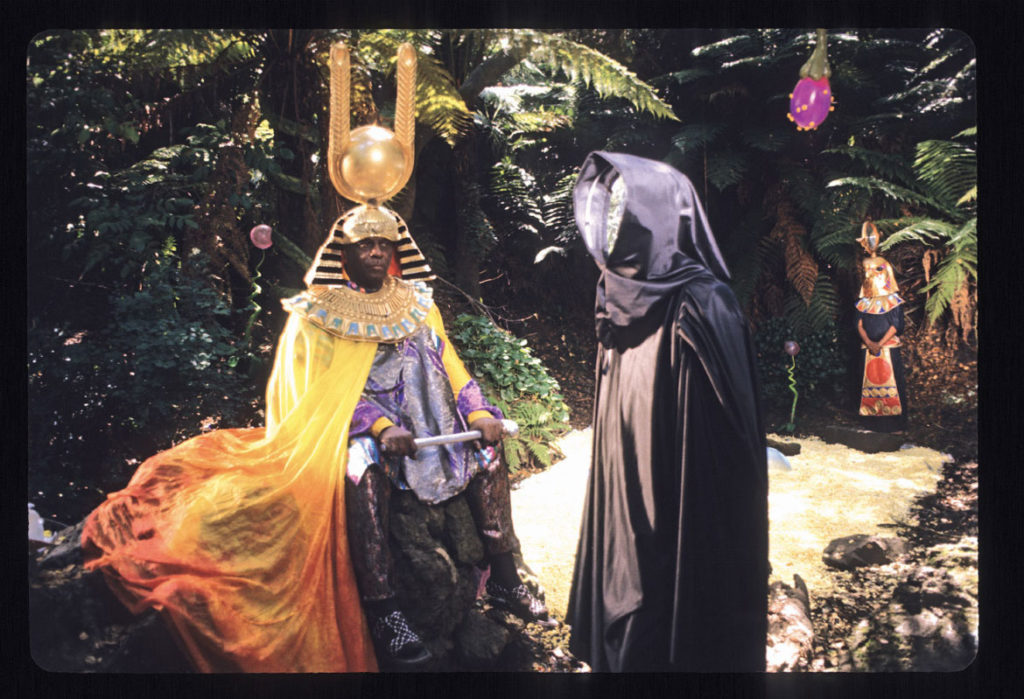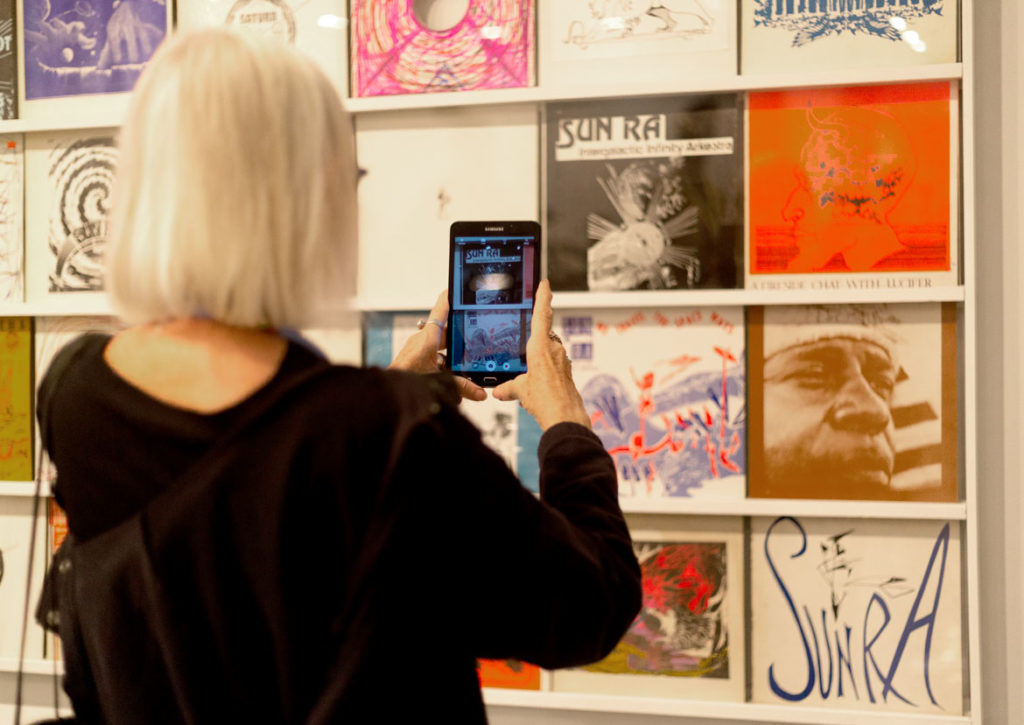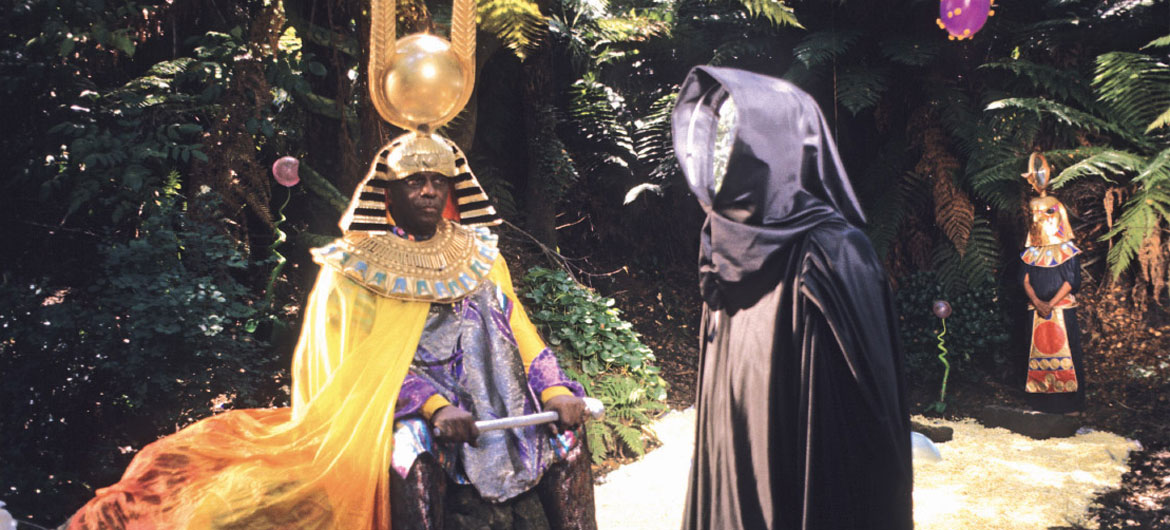“There’s no limit to the things that you can do,” go the lyrics to jazz visionary Sun Ra’s “Space Is the Place.”
“This exhibition highlights Sun Ra’s idea of an ‘altered destiny,’ a utopian belief that a more meaningful and just world awaits humanity in Outer Space,” write the organizers of “Monuments: The Earth Expedition of Sun Ra” at the Portland Art Museum in Oregon from Oct. 26, 2018, to Jan. 27, 2019. “To Sun Ra, Outer Space was not an escapist fantasy—it was a place where society, culture, and systems are reimagined to give power to the oppressed.”
The exhibition—featuring original album art, vintage photos, and instruments—is part of the museum’s “We.Construct.Marvels.Between.Monuments.” series, in this instance organized by Libby Werbel in partnership with Portland-based group Deep Underground (Bethlehem Daniel, Madenna Ibrahim, Mia O’Connor-Smith, and Janessa Narciso).
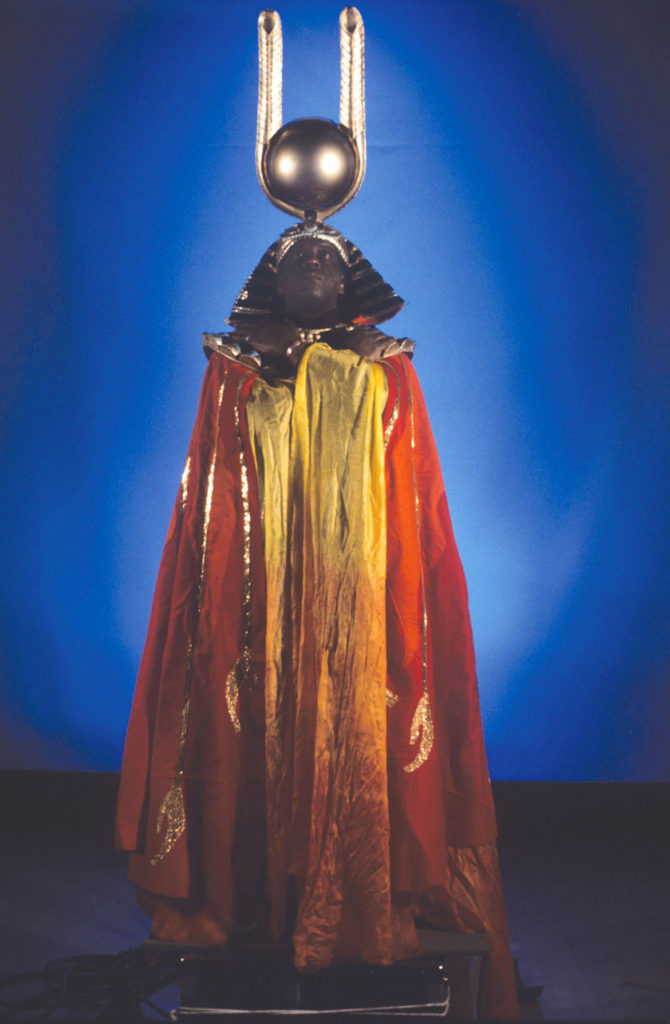
With monuments to the racist Civil War Confederacy being taken down across the United States, the exhibition comes out of a question: “What are the new monuments we wish to build? Who are the artists, thinkers, and heroes we wish to exalt and preserve for future generations? ‘Monuments’ upholds Sun Ra as one of these visionary figures,” organizers write.
“Sun Ra (active on Earth 1934–1993) was a jazz composer, musician, bandleader, teacher, and poet who became known for his theatrical performances and personal mythology: his name references the Egyptian sun god Ra and his origin story proclaimed that he had come to Earth from Saturn,” organizers write. “Sun Ra has been credited as one of the pioneers of Afrofuturism, a school of thinking that utilizes science fiction, music, art, and political theory to propose a thriving destiny for black people.”

Sun Ra arrived to Earth as “Sonny” Herman Poole Blount on May 22, 1914, and grew up in Birmingham, Alabama, where family members worked at a train station restaurant in the glow of the nearby sign: “Birmingham: The Magic City.” He was a prodigious reader and dazzling pianist. He played in and formed bands in his teens and 20s. He made his first recording (as Sonny Blount), while in high school in 1933, accompanying the Clarence Williams Big Band.
During World War II, he refused to fight and was granted conscientious objector status. He moved to Chicago’s South Side in the mid 1940s and did arranging for Fletcher Henderson and other swing band leaders. He continued to reinvent himself, billing himself as Sun Ra beginning in 1952, and forming his own big band a couple years later—the group that would become his Arkestra.
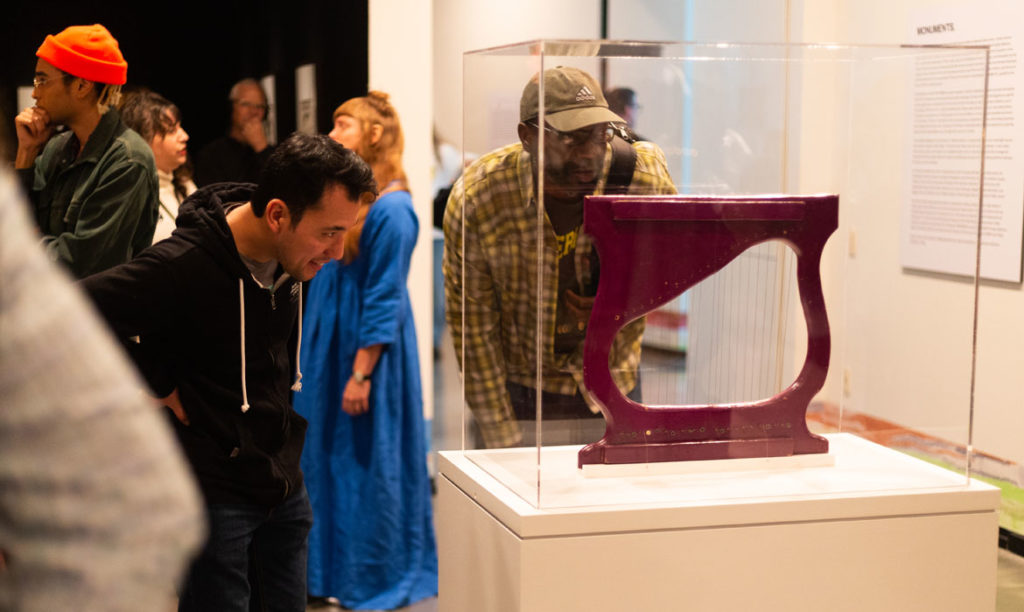
Sun Ra forged a jazz rooted in the past that was also mind-blowingly innovative—drawing on blues, doo wop, traditional Western classical music, Egyptian, Indian, Latin, Chinese, and Japanese music. The Arkestra crafted their own instruments and were pioneers of electronic instruments in jazz.

Sun Ra’s philosophy synthesized Southern Baptist preaching, Black Nationalism, Egyptology, futurism and the occult. Sun Ra and the Arkestra dressed in handcrafted, futuristic gold and silver metallics, Egyptian headdresses, masks.
A key account of his mythology was the 1972 film “Space is the Place.” Exhibition organizers describe it as “an Afro-science fiction film set in Oakland, California. In the film Sun Ra transports the Arkestra on a music-powered spaceship to planet Earth. During his mission to enlighten black youth on the cosmic revolution, Sun Ra’s power to turn harmonic progression into energy is under attack. ‘You know the revolution don’t half step, c’mon!’ says Bubbles, played by Jack Baker, leading his young partners to save Sun Ra from the assassination of his truth.”
John F. Szwed, author of the 1998 biography “Space Is The Place: The Lives And Times Of Sun Ra,” wrote, “He spoke from a long tradition of revisionist history by way of street corner Egyptology, black Freemasonry, theosophy, and oral and written biblical exegesis, all bound together by the love of secret knowledge and the importance it bestows upon those excluded from the usual circuits of scholarship and power.”
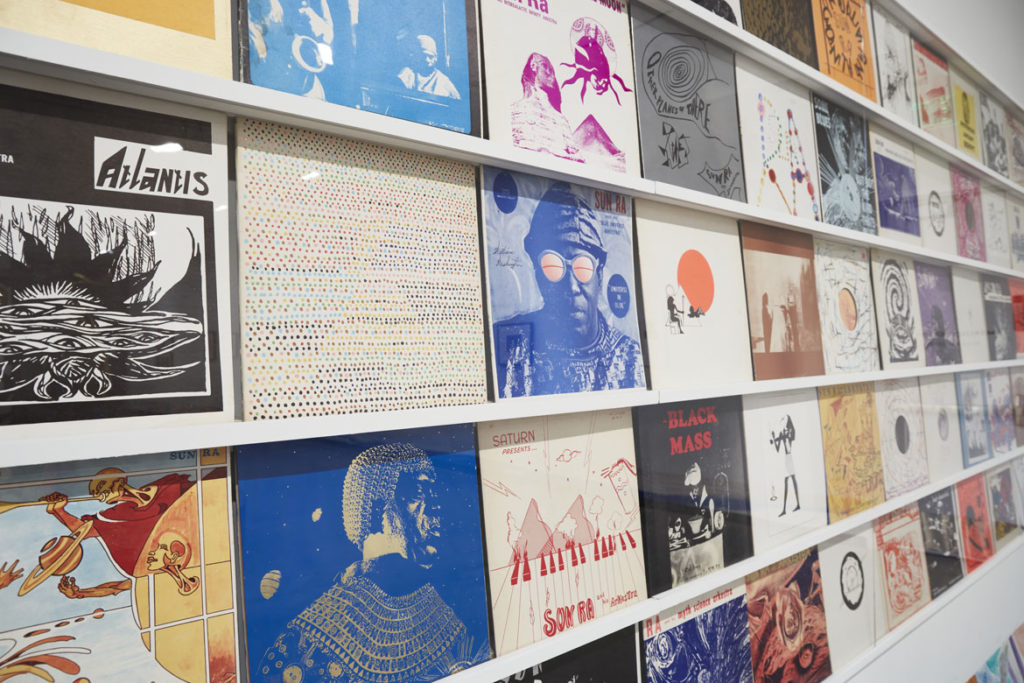
Sun Ra struggled to get recording contracts for his original tunes, seen as too difficult, too avant-garde, too weird. Instead he became a pioneer of music recording—obsessively documenting his band in rehearsal. He would produce as many as 130 albums—the majority released through the Saturn Label, which he launched with Alton Abraham and James Bryant in 1957, one of the first black-owned independent record labels.
Sun Ra moved with the band to New York in 1961, then Philadelphia in 1968, communally occupying a house that served as the Arkestra’s headquarters until his death in 1993.
Of course, Sun Ra always resisted being pinned down by dates and other ordinary ways of accounting. “I’m not part of history,” he once said. “I’m more a part of mystery.”
If this is the kind of coverage of arts, cultures and activisms you appreciate, please support Wonderland by contributing to Wonderland on Patreon. And sign up for our free, weekly newsletter so that you don’t miss any of our reporting.
